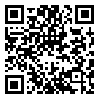BibTeX | RIS | EndNote | Medlars | ProCite | Reference Manager | RefWorks
Send citation to:
URL: http://jdisabilstud.org/article-1-3285-en.html
2- Professor, Department of Psychology, Faculty of Education and Psychology, Shahid Chamran University of Ahvaz, Ahvaz, Iran
3- Assistant Professor, Department of Psychology, Faculty of Education and Psychology, Shahid Chamran University of Ahvaz, Ahvaz, Iran
Abstract
Background & Objectives: Over the past four decades, the treatment of Obsessive–Compulsive Disorder (OCD) has been under the influence of cognitive–behavioral models. These models consider intrusive thoughts as universally experienced and normal phenomena. However, interpreting these thoughts negatively leads to distress, prompting individuals to seek relief from these thoughts. Nevertheless, these models do not consider significant differences in symptom severity, prompting researchers to focus on underlying psychological processes, including attachment styles. Various studies indicate that insecure attachments are associated with different forms of psychological pathology. However, few studies have examined the role of attachment in OCD. Additionally, individuals with OCD exhibit weak emotional recognition. Another underlying factor is self–ambivalence, wherein individuals suffering from OCD lack a unified perception of self and perceive intrusive thoughts as a criterion for internal conflict perception. Given that current interventions primarily focus on cognition, behavior, and biochemistry, background phenomena might be overlooked. Therefore, further exploration in this area holds significant potential value. This present study aimed to examine the design of a path analysis model for some predictors of obsessive–compulsive symptoms.
Methods: The research method was a descriptive correlational approach based on path analysis. The study population consisted of master's students at Ferdowsi University, Mashhad City, Iran, in the academic year 2022–2023. A total of 206 students were selected using a multi–stage cluster sampling method. First, four faculties were randomly selected. Then, three fields of study were chosen randomly from each of the selected faculties, and two classes were randomly selected from the classes related to that field. The research instruments included the Obsessive–Compulsive Inventory–Revised (OCI–R) (Foa et al., 2002), the Experiences in Close Relationship Scale (ECR) –Short Form (Wei et al., 2007), the Self–Ambivalence Measure (SAM) (Bhar & Kyrios, 2007), the Perception of Threat from Emotion Questionnaire (PTEQ) (McCubbin & Sampson, 2006), Obsessive Beliefs Questionnaire (Obsessive–Compulsive Cognitions Working Group, 2005), and the Interpretation of Intrusions Inventory (Obsessive–Compulsive Cognitions Working Group, 2005). In this study, data analysis was performed using the Pearson correlation coefficient and path analysis method in SPSS version 26 and AMOS version 24 software at a significance level of 0.01.
Results: The results indicated that the direct effect of anxiety attachment on obsessive–compulsive symptoms (β=0.209, p=0.002) was significant. Also, the indirect effect of anxiety attachment on obsessive–compulsive symptoms mediated by the perception of threat from emotions (β=0.066, p=0.004), the self–ambivalence (β=0.153, p=0.001), the obsessive beliefs (β=0.044, p=0.016), the interpretation of intrusive thoughts (β=0.044, p=0.017), the simultaneous effect of obsessive beliefs and interpretation of intrusive thoughts (β=0.013, p=0.008), the simultaneous effect of self–ambivalence and obsessive beliefs (β=0.169, p=0.002), the simultaneous effect of self–ambivalence and interpretation of intrusive thoughts (β=0.179, p=0.001), and the simultaneous effect of self–ambivalence, obsessive beliefs and interpretation of intrusive thoughts (β=0.035, p=0.001) was significant. Further, the indirect effect of avoidant attachment on obsessive–compulsive symptoms mediated by the perception of threat from emotions (β=0.023, p=0.010), the self–ambivalence (β=0.105, p=0.001), the simultaneous effect of self–ambivalence and obsessive beliefs (β=0.131, p=0.002), the simultaneous effect of self–ambivalence and interpretation of intrusive thoughts (β=0.020, p=0.001), and the simultaneous effect of self–ambivalence, obsessive beliefs and interpretation of intrusive thoughts (β=0.012, p=0.001) was significant. However, the direct effect of avoidant attachment on obsessive–compulsive symptoms (β=0.028, p=0.608) was not significant. Also, the indirect effect of avoidant attachment on obsessive–compulsive symptoms mediated by interpretation of intrusive thoughts (p=0.412, β=–0.004), mediated by obsessive beliefs (β=0.013, p=0.090), and the simultaneous effect of obsessive beliefs and interpretation of intrusive thoughts (β=0.003, p=0.081) was not significant. The goodness–of–fit indices indicated an adequate fit for the model (χ²/df=2.788, IFI=0.981, GFI=0.978, CFI=0.981, RMSEA=0.093)
Conclusion: Based on these results, the present study highlights the importance of developmental and underlying factors in obsessive–compulsive symptoms, affirming the necessity to consider these factors in interventions related to obsessive–compulsive disorder.
| Rights and permissions | |
 |
This work is licensed under a Creative Commons Attribution-NonCommercial 4.0 International License. |



